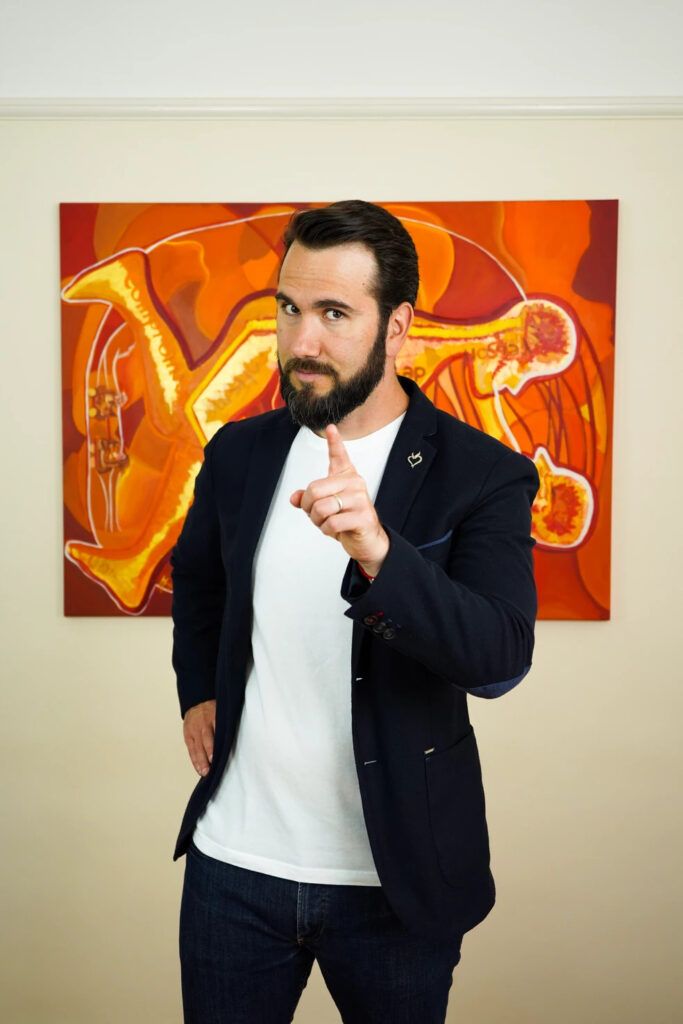When first presenting, people often wonder what to do with their hands because they can sometimes have a life of their own and can be distracting for the audience. Do we put them in our pockets, hold them by our sides, hide them behind our backs?
The answer is none of the above.
To make sure you know what to do and feel comfortable while doing it, I’m going to introduce you to an adaptation to public speaking of the Satir Communication Styles / Category Patterns. These five nonverbal styles are specific postures and gestures that involve your entire body (including your hands) and your tonality.
These categories come from Virginia Satir, one of the models of excellence studied by the creators of NLP (Neuro-Linguistic Programming). She was a family therapist who developed an effective way of working with whole families together.
Each category seems to have cultural associations, so adopting one particular physiology will trigger not only a certain state within you, it will also create a certain state within your audience.
Here is a summary of the Satir Category Patterns:
The Placater
This is a more ingratiating posture. Symmetrical open physiology, palms up, moving in an upwards direction. The placater says ‘I’m begging you’, ‘help me’, ‘I’m open’, ‘I want to please you’, ‘I invite you to join me of this journey and please, don’t do it for me, do it for yourself’.
If you wish to be perceived as approachable; invite people in to trust you; this is a good stance to take. It is also known as the ‘Truth Plane’.
Tip: This position can be perceived as weak, therefore it’s important you use it with purpose. A good position to replace it with is the Leveler.

The Leveler
It shows a symmetrical physiology; upright, moving hands (palms down) in a downward movement and spreading along the way. It’s a great position to convey credibility. A leveler says things like ‘I’m giving it to you straight’, ‘you have to master these tools if you want to achieve success in your life’. It positions you as an authority.

The Blamer
Asymmetrical, leaning forward and pointing the finger. ‘You better listen to me, because what I’m about to tell you can change the way things are in your life now’, ‘It’s your fault’, ‘it’s down to you’. Often used in an entertaining ‘joker’ style to maintain interest in the audience.

The Computer
Asymmetrical, hand on chin (think Rodin’s ‘The Thinker’), or arms crossed, academic lecturer stance authority. ‘I’m reasonable, logical and sensible, here are the facts’. This is also a good stance to adopt when listening to comments/questions from participants. It sends the message ‘I’m here listening to you and considering your words carefully’.

The Distractor

The class clown. Asymmetrical physiology, angular, disjointed and incongruent. ‘I don’t know, it’s not my fault’. Primarily used to entertain the audience and provide humour.
When giving speeches, using a variety of these stances will result in outstanding, emotionally charged speeches that will develop a strong rapport between speaker and audience. Next time you present, incorporate these category patterns and build an incredible bond with your listeners. For example:
- Speaker-(blamer): Lazy people will struggle to achieve success, so get off your butts and do something.
- Audience internal reaction-(placater): I want to be successful, I shouldn’t be sitting around being lazy.
- Speaker- (placater): But I know that I’m not perfect, because sometimes I can’t even get up on time in the morning!
- Audience internal reaction-(blamer): You aren’t perfect either!
Language is a more recent technology. Your body language, your eyes, your energy will come through to your audience before you even start speaking.
Peter Guber
If you like my content and would like to improve your public speaking skills, get in touch. Here is my email address: jose@finding-excellence.com

